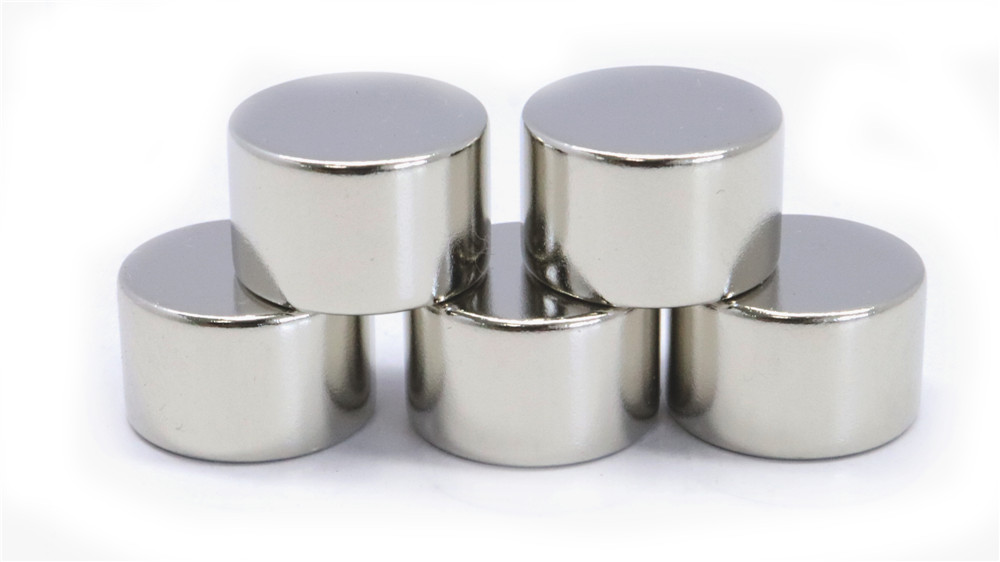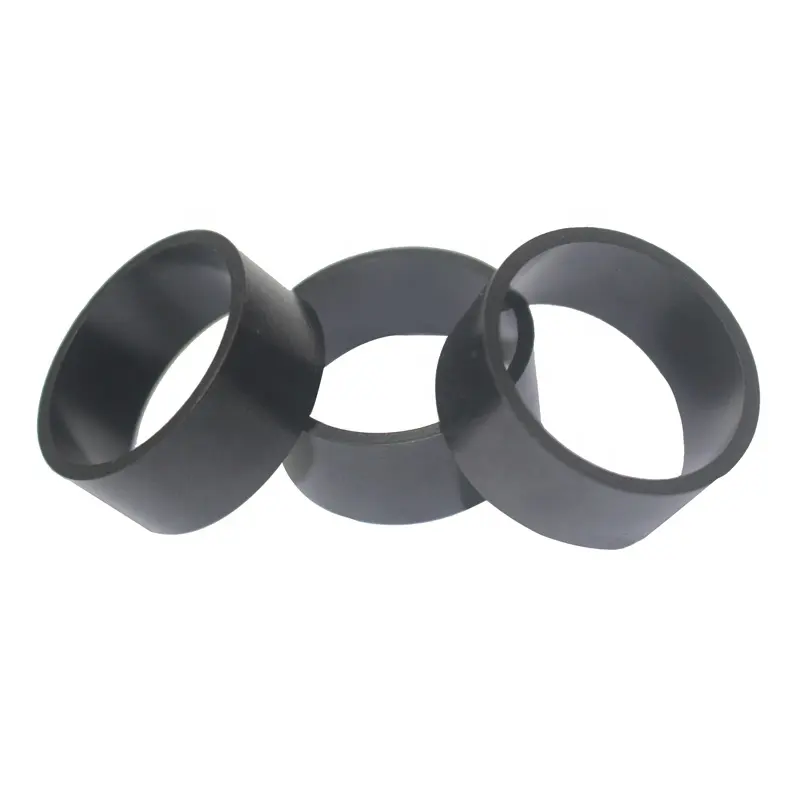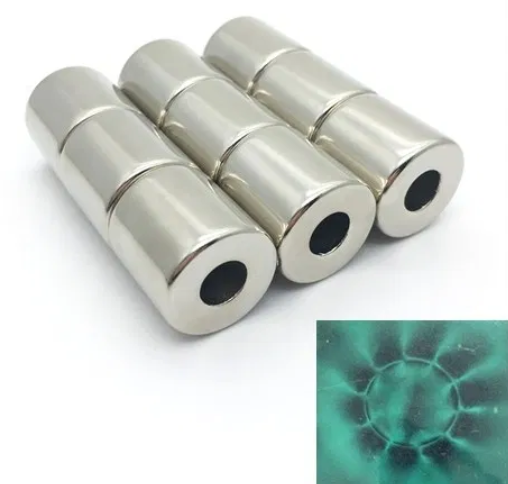
What are the types of NdFeB permanent magnets?
2023-05-19 14:50What is NdFeB permanent magnet?
NdFeB magnets, commonly known as neodymium magnets, NdFeB magnets, are made of neodymium, iron, boron and other materials through special processes. The strong magnetic force mainly comes from the intermetallic compound ND2FE14B, because it contains about 30% of rare earth metals Neodymium, so it is also called rare earth permanent magnet. According to different processes, it can be divided into sintered NdFeB permanent magnets and bonded NdFeB permanent magnets.
Classification of NdFeB permanent magnets
NdFeB permanent magnets are mainly divided into three categories:
sintered NdFeB permanent magnets
bonded NdFeB permanent magnets
hot-pressed NdFeB permanent magnets
1.Sintered NdFeB permanent magnet

Using powder metallurgy technology, the blank is made by smelting, powder making, molding, sintering and other processes, and then it is made into finished products of various shapes and sizes through grinding, cutting and surface treatment. It is the most widely used and accounts for more than 95% of the output.
1.1 Features of sintered NdFeB permanent magnets:
Sintered NdFeB permanent magnet has strong magnetic force:
The main phase of the magnet is the intermetallic compound ND2FE14B, which is said to have a theoretical energy level of 64MGOES. At present, it has been industrially produced as N55, and its energy level is above 53MGOES. The sintered NdFeB permanent magnet has a very strong magnetic force and can absorb pure iron more than 400 times its own weight. Compared with magnets of other materials, sintered NdFeB permanent magnets have large magnetic properties, but small size and mass. Generally speaking, a very small sintered NdFeB permanent magnet can achieve the effect of other magnets several times its size and weight.
Sintered NdFeB permanent magnets are easy to process:
Sintered NdFeB permanent magnet blanks can be processed into products of various shapes and sizes by grinding, cutting, wire cutting, hollowing, multi-wire and other processes. Precise dimensional control can be obtained during processing.
Sintered NdFeB permanent magnets need electroplating:
The secondary phase that makes up the sintered NdFeB, the Nd-rich phase is easy to be oxidized and corroded, so the magnet needs to be treated with surface protection. According to the different requirements of the environment in which the magnet is used, surface treatment methods such as phosphating, electroplating, chemical plating, electrophoresis, and vapor deposition can be used. Common coatings such as zinc, nickel, nickel-copper-nickel, gold, chromium, aluminum, epoxy resin, Rilin, Teflon, etc.
There are many grades of sintered NdFeB, and the working temperature is from room temperature to 260 degrees Celsius.
According to the classification of magnetic energy integral, there are N35, N38, N40, N42, N45, N48, N50, N52, N54, N55 from low to high. The higher the energy product, the stronger the magnet.
For some grades, letters will be added to the magnetic energy product, which represents the coercivity level of the magnet, or reflects the high temperature resistance level of the magnet. If there is no letter behind the magnetic energy product, the magnet is a standard temperature neodymium, and the working temperature generally cannot exceed 60 degrees Celsius when used. The following are the specific letters and the operating temperature they represent. Sintered NdFeB 28RH-35RH series can work up to 260 degrees Celsius.
1.2. Application of sintered NdFeB permanent magnet:
Magnetic separators, permanent magnet lifters, various electric motors, generators, high-performance motors, magnetic resonance imaging (MRI), sensors, speakers, consumer electronics and green energy and many other commercial fields.
2. Bonding NdFeB permanent magnets

The magnetic powder with ND2FE14B as the main phase is mixed with a binder, and then molded, extruded or injected with a complex and precise mold.
2.1 Advantages of bonded NdFeB permanent magnets:
Direct molding to the final size, high dimensional accuracy, large degree of shape freedom, good mechanical strength, light specific gravity, etc., can be made into various thin-walled parts, special-shaped parts and other products, solving the problem that sintered NdFeB is difficult to precisely process into special shapes, In the process of processing, problems such as cracking, damage, and difficulty in assembly are prone to occur.
2.2 Disadvantages of bonded NdFeB permanent magnets:
All new products need to open molds, and the magnetic properties are much lower than those of sintered NdFeB.
2.3 Application of bonded NdFeB permanent magnets:
Computer field: hard disk drives, optical disc drives, etc. in computers;
Office automation equipment: scanner motor, printer drive motor, laser printer magnetic roller, etc.;
Automotive micro-motors and sensor products: such as wiper motors, EPS sensors, etc.;
Other types of household appliances, digital products and motors and other fields.
3. Hot-pressed NdFeB magnet

Multi-stage NdFeB magnetic ring
Refers to the use of quick-quenched nano-gold NdFeB magnetic powder, through a unique hot extrusion process, to form a radially oriented ring magnet. Its orientation is not by external magnetic field, but by mechanical extrusion to form a completely dense nanocrystalline structure.
3.1 Features of hot-pressed NdFeB magnets:
Without adding heavy rare earth of dysprosium and terbium, it can achieve the same magnetic properties as sintered NdFeB, with better compactness and corrosion resistance. It belongs to high-performance NdFeB permanent magnets. 240~360kJ/m3, the magnetic ring is oriented in the radial direction, and the radial magnetic properties are uniform, which can make the motor run quietly and the torque output is smooth. At the same time, it also has high heat resistance, and the service temperature can reach 180°C-200°C.
3.2 Application of hot-pressed NdFeB magnets:
It can partially replace ordinary sintered NdFeB magnets, and is mainly used in high-efficiency and energy-saving motors such as automotive EPS, servo motors, and electric tools.
